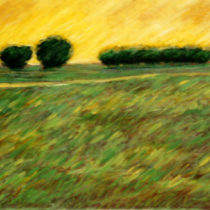Landscape Architecture for Landscape Architects › Forums › GENERAL DISCUSSION › FIGHT! FIGHT! FIGHT!
- This topic has 1 reply, 10 voices, and was last updated 13 years, 2 months ago by
 Noah Mabry.
Noah Mabry.
-
AuthorPosts
-
February 3, 2011 at 10:51 pm #165169
 Trace OneParticipant
Trace OneParticipantthese questions have nothing to do with reality, imho..nothing at all..Landscape architects do not relegate themselves to plants only..urban planners are landscape architects..To get a grip on reality one would have to refer to a survey as to who is doing what..I don’t know any municipality that discludes landscape architects from working as urban planners..
February 3, 2011 at 11:04 pm #165168 Trace OneParticipant
Trace OneParticipant@ Noah, sorry , should have been clear in previous comment, the most of what I said refers to the article. Only the last comment to your opinion specifically of Corner, Field Op, but you seem to have correctly understood the different thoughts.. …..
I just don’t see Field Op as having a real design inspiration, unlike Garett Ekbo, or Martha Schwartz, or, to move into architecture, Gwathmey, Renzo Piano, Frank Gehry..These guys have design philosophies that they have implemented, and that are consistent..I see Field Op as more good at getting the big commissions, than as an office that has a real style, or philosophy, that is evident in their designs…
and I am curious..What is Field Operations design inspiration, that differentiates them?
I just don’t see it..But I am old, and (full disclosure) Corner lived on my hall in our West Philly apartment bulding, while at Penn..I had to fight him for time on the huge Vox Intergraph computer McHarg had bought, a million dollars of dreams, at the time..
Where is the design inspiration, as opposed to the people skills that get you the project..
Perhaps I am missing something..I really would like to know..If one described the designs of Fresh Kills and the High Line, how would you distinguish their styles, from, say any other office landscape architect of today..
February 3, 2011 at 11:27 pm #165167 Trace OneParticipant
Trace OneParticipant(since I like to write about myself, I will continue to indulge myself, since this site LETS me – thank you!)-
I mean, when I was in school, Hanna/Olin have a real style – classical..Andropoggon has another distinct style – very naturalistic, to be brief..Ed Bye is a real stylist – it would take some thought to articulate, but you can see and recognize it…Sir Peter Shepherd – gardenesque, Gertrude Jekyll – ish..
what is Field Operations style, philosophy – what is the thread that distinguishes their designs? Feathered walkways? big oversized benches? Since he HAS built so much, one can regard the designs and think about what distinguishes them….
I just dont see it..
February 4, 2011 at 2:31 am #165166 ncaParticipant
ncaParticipantI met david rubin a couple of years ago at CSU where he gave a lecture. He is the newest principal of Olin. I came to the conclusion on my own that if Olin has a style it is ‘classical or traditional.’ I asked Rubin about this and he vehemently denied having a style, especially that one…for what its worth.
February 4, 2011 at 2:56 am #165165 Jason T. RadiceParticipant
Jason T. RadiceParticipantI too have met both David Rubin and Laurie Olin several times. They certainly do not have a strictly”classical” style, but tend to get they types projects that warrant it. Design retraint is an important skill to learn. Their current Canal Park project in DC is certainly not traditional.
February 4, 2011 at 5:22 am #165164 Roland BeinertParticipant
Roland BeinertParticipant“At the heart of the landscape urbanist agenda is the notion that the most important part of city planning is not the arrangement of buildings, but the natural landscape upon which those buildings stand.”
Actually, the arrangement of buildings in a city is extremely important, not only for people, but also for ecological processes. Obviously, our buildings, roads and other structures form barriers to the movement of wildlife, the flows of nutrients, water, air, etc. Let’s say there are two cities with the same population, but one city has a lower density than the other. The lower density city will have to spread out over a larger area, creating more disturbances to the natural ecosystems. Dense cities allow more continous undisturbed landscape. Dense neighborhoods allow a larger number of people access to larger amounts of continous green space.
“And instead of pushing people closer together in service of achieving density, as New Urbanism advocates, landscape urbanism allows for the possibility of an environmentally friendly future that includes spacious suburbs, and doesn’t demand that Americans stop driving their convenient cars.”
New urbanism is not about keeping people from having lots of space or driving a car if they want one. As has been pointed out in other discussions on new urbanism, new urbanists are not calling for the eradication of single family housing, large lots or cars. They are arguing against single use zoning, buildings and neighborhoods that don’t relate to the rest of the city and allowing drivers to run amok. I don’t understand why some of you think that our current way of zoning is less restrictive than the form based codes new urbanists promote. I would much rather have the form of my building dictated to me than the way I use my property. What’s wrong with front porches? What’s wrong with being close enough to walk or bike to a store? As someone who walks and bikes a lot, I can tell you that a grid pattern of streets is much more convenient for walking and biking than the huge super blocks found in suburbs. You can have a car in a new urbanist neighborhood. You just don’t have to drive EVERYWHERE.
“Americans have decided how they want to live, they argue, and the job of urban designers is to intelligently accommodate them while finding ways to protect the environment.”
Have we really decided how we want to live or has it been decided for us? I’d say our current way of doing things doesn’t give us a wide variety of housing or transportation options. I’d say single use zoning restricts us from living near our workplace if we want to.
February 4, 2011 at 11:12 am #165163 Trace OneParticipant
Trace OneParticipantok, I admit defeats on Olin, since my perspective is from Hanna/Olin days, and also “classical’ is really not the right word..
design restraint is better..to describe their work as I know it..Are you guys saying there is no unity to their body of work, as their is to Frank Gehry’s ?(for example)
I geuss that is what I am looking for in Field Op – some sort of unity to their body of work, that explicates their design philosophy..And I don’t think just wining the great commissions counts for unity..It is what is built after that..
Just a question..
February 4, 2011 at 3:27 pm #165162 Noah MabryParticipant
Noah MabryParticipantI suppose I never intended to proclaim the entire body of Field Ops/Corner’s work as superior to everything else. I was really just trying to comment based on the context of the article. That is to say those who are labled as landscape urbanists are producing stuff that I really find compelling. I didn’t mean to get pigeonholed into being some sort of Cornerite.
I also hadn’t taken into consideration the whole argument on personal style when making my previous comment either. In fact I may actually have a hard time distinguishing his work from that of other designers if I didn’t know better, but once again, in the context of why NUs and LUs cant get along I was not intending to make a point on any firm or person’s unique style. Which, I suppose, means I should not have called out an individual designer.
And on the point of people skills I think I’d rather talk with an average designer who really
February 4, 2011 at 3:38 pm #165161 ncaParticipant
ncaParticipantI agree Jason. ‘Design Restraint’ is an important skill that I think comes with experience.
I agree completely that there is an underlying ‘style’ or ‘unity’ to their body of work, whether they like it or not. I picked it up on my own, so obviously it’s there. I like a lot of their work too by the way.
As far as a unifying theme to field ops/corners work how about contrived and pretentious?
February 11, 2011 at 8:40 pm #165160Cal
Participant”Those who are inspired by a model other than Nature, a mistress above all masters, are laboring in vain.” — Leonardo da Vinci.
Nature will have the last word in that argument – while we theorize and argue semantics…as we circle the drain! haha.
Answer – Patrick Blanc, go green and vertical. And cover the rooftops with vegetation too, Or as Corner has done, cover old roadways.. (not unlike sinking old ships to create coral reefs). These efforts to cover our built urban environment with green seems to, perhaps, provide a glimpse into the future – the best laid plans of urban design theory are tomorrow’s ruins taken over once again by nature….the true master. Or at least it reveals a desire for a rebalancing of our relationship with Nature. Stylistically it reminds me of the mid-18th C. English (gothic revival) landscapes and gardens, idealizing Nature’s persistance and ultimate dominance upon all things Greek…haha…the architectural ruins representing the rationally ordered efforts by man to tame nature’s chaotic energies. That was a time of desire for new freedoms in every aspect of life as is true now, in our times. No coincidence.
Come to think of it, that might make for a very interesting article, study and comparison. I think I’ll set to work on that.
February 11, 2011 at 10:53 pm #165159 April PhilipsParticipant
April PhilipsParticipantWOW! I have seen a lot of debate triggered by this article on New Urbanism versus Landscape Urbanism on many websites the past few days which is very exciting for the dialogue it is sparking. I agree with many who have already said that both are right and both are wrong but neither really has “it”.
We desperately need a paradigm shift in society that values both nature and civilization equally – not one at the expense of the other. And that includes true collaboration with multidiscipline teams that can harness each other’s knowledge to innovate and design our future cities and neighborhoods without posturing or selling out – the typical scenario unfortunately by most teams.
Can we envision a time in the future when everyone from the people who create development codes to developers themselves will value the real integration of ecosystem processes and design processes? Will we ever have a culture that values designing for interconnectedness on all levels of a project? Both camps use major intellectual mumbo jumbo, have projects that marginalize the ecological aspects of their projects, and fail to truly address true sustainability which needs to include social justice and address the damage we are continuing to do to our planet on a daily basis. And, neither camp has built places that represent a vital understanding of what it means to really integrate ecological processes with cultural ones and economic ones in the urban environment.
We need to design our cities and neighborhoods with an understanding of the true essence of a place and to reconnect ourselves with life giving processes if we are to go beyond mere talk of ecology and urbanism. We need to get beyond the trite fights of one camp versus the other and get to a real revolution of new ideas that bridge understanding and lead us to a higher level of design and placemaking not yet seen or valued on this planet.
-
AuthorPosts
- You must be logged in to reply to this topic.

